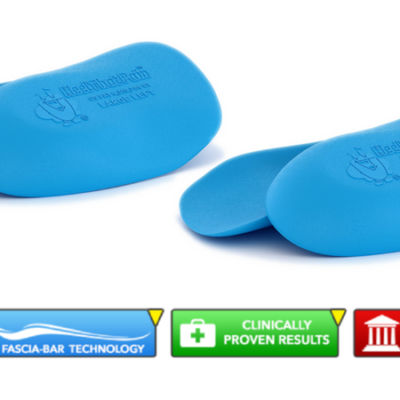Vitamins And Minerals To Help With Heel Pain
Calcium
Adequate daily intake of calcium may prevent the development of heel spurs – bony, calcium protrusions that form on the heel as a result of Plantar Fasciitis. Heel spurs prod the soft tissues cushioning the heel bone, worsening pain. You can take a daily calcium supplement or get calcium directly from a healthy diet. Calcium-rich foods like dairy, almonds, sesame seeds, kale, turnip greens, white beans, black-eyed peas, and oranges will help you meet your daily nutrient needs.Magnesium
Magnesium is also a vital nutrient in managing plantar fasciitis and foot health. The body needs magnesium in order to properly absorb calcium. In fact, people who eat large quantities of calcium without an accompanying intake of magnesium may develop a calcium deficiency. You can take a balanced calcium-magnesium supplement or eat plenty of magnesium-rich foods such as spinach, pumpkin seeds, white beans, black-eyed peas, garbanzos, lentils, pinto beans, brown rice, millet, avocados, bananas, and dried figs.Vitamin C
Current medical studies indicate that people with good levels of bioflavonoids have lower amounts of C-reactive proteins – culprits linked to a variety of inflammatory diseases, cancers and other illnesses. By consuming vitamin C with bioflavonoids, you will be directly addressing the inflammation present in Plantar Fasciitis. Vitamin C is abundant in citrus fruits, broccoli, Brussels sprouts, tomatoes, green peppers, melons, kiwis, strawberries, alfalfa sprouts, and the skins of potatoes.Shop our natural plantar fasciitis products!
Bioflavonoids
Bioflavanoids are antioxidants with anti-allergic, anti-inflammatory, anti-microbial, and anti-carcinogenic properties. They are found in the rinds of citrus fruits, in green peppers, broccoli, tomatoes, purple grapes, berries, and some herbal teas.
Methylsulfonylmethane (MSM)
MSM is a sulfur compound found in fresh fruits and vegetables, milk, fish, and grains. Overcooking and industrial processing can destroy MSM, so eating least-cooked and raw foods is important in accessing this compound to benefit from its anti-inflammatory properties. You may also apply methylsulfonylmethane as a topical lotion, directly to the heel and foot, to decrease inflammation and pain.
Arnica
Arnica is a plant with a long history of use in the treatment of sprains, bruises and muscle strains. The compound found in the arnica plant is helenalin – an anti-inflammatory substance which has been shown to inhibit the production of inflammatory agents and to reduce bruising and swelling. Arnica also dilates capillaries, drawing increased blood flow into the treated area. Arnica should not be taken internally. It can be applied topically in the form of a cream, lotion or tincture to the sole of the foot to reduce the inflammation associated with heel pain and Plantar Fasciitis.
Turmeric
Turmeric has long been revered in both Indian and Chinese medicine for its ability to fight inflammation and reduce pain, making it great for plantar fasciitis. Turmeric is used as a cooking spice in multiple cuisines, but it is the pigment of turmeric, called curcumin, that contains the greatest pharmacological properties. Numerous studies have indicated that the anti-inflammatory effects of curcumin are comparable to those found in prescription drugs such as hydrocortisone, phenylbutazone and over-the-counter pain killers. Turmeric can be taken in capsule form, as a tea, and as a lotion applied topically to the plantar fascia area.
Bromelain
As a supplement, bromelain is derived from pineapples and is considered a powerful anti-inflammatory substance. It also aids digestion and nutrient absorption. Bromelain is a mixture of protein-digesting enzymes, or proteolytic enzymes. Studies have found bromelain to be as effective as ibuprofen and aspirin in reducing the pain and inflammation associated with Plantar Fasciitis. In fact, forward-thinking surgeons are now recommending that patients take bromelain supplements in the weeks prior to surgery due to its ability to accelerate healing and reduce bruising and swelling. This is a remarkable substance that every Plantar Fasciitis sufferer should know about. While all parts of the pineapple contain bromelain, it is suggested that you take a supplement if you are trying to resolve a health problem in order to access sufficient quantities of the proteolytic enzymes.
Natural Medicine Can Improve Health, Reduce Pain and Speed Healing
While you cannot replace the need for good rest and a high-quality orthotic for healing Plantar Fasciitis, natural supplements and a diet rich in vitamins and mineral can help you to regain foot health more quickly. The pain of Plantar Fasciitis can become debilitating if left untreated. If you are experiencing heel pain that does not resolve itself within a few days, we recommend taking the following steps:
- Utilize all of our free resources about Plantar Fasciitis and heel pain. Our company is committed to providing the most comprehensive Plantar Fasciitis learning resource on the Internet. Customers tell us every day that our free educational materials and Fascia-Bar orthotic shoe inserts have changed their lives!
- If you recognize your heel pain symptoms as being consistent with the in-depth descriptions of Plantar Fasciitis found here on our website, commit to two 20-minute rest periods each day, icing your heels while you rest, and performing these simple stretching exercises on a daily basis.
- Purchase a pair of Heel Seats or one of our other Fascia-Bar insert products and wear them every day.
- Assess your daily diet and consider making use of the vitamins and minerals described above to reduce pain and lessen the inflammation associated with Plantar Fasciitis.






